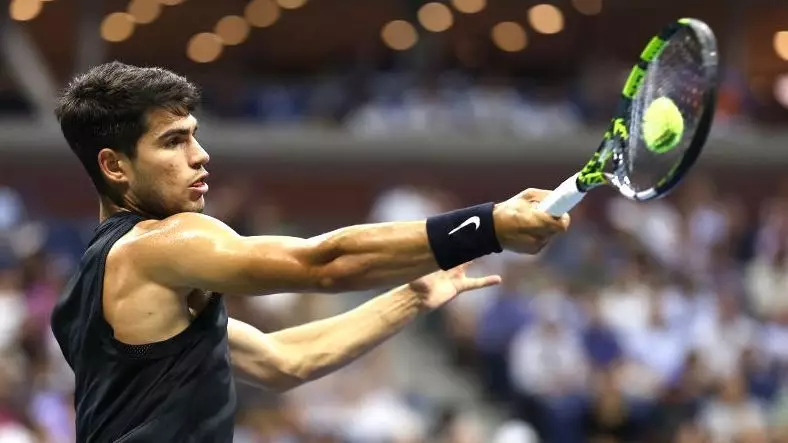The China Open showcased the extraordinary talent of Carlos Alcaraz, the world’s third-ranked tennis player, as he faced off against Giovanni Mpetshi Perricard. Alcaraz secured a notable 6-4, 6-4 victory, a testament to his composure and strategic gameplay. Despite Mpetshi Perricard’s formidable serving capacity, clocking speeds of 140 mph, Alcaraz managed to capitalize on critical weaknesses in his opponent’s game, particularly during the initial moments of each set.
In analyzing Alcaraz’s performance, it is evident that his approach was more than just about physical prowess. He articulated a clear strategy, stating, “The plan was just to put as many returns in as I can.” This highlights a key aspect of successful tennis: not merely relying on raw talent but also employing a cerebral approach to outmaneuver opponents. Mpetshi Perricard may have won an impressive 83% of points with his first serve, yet the crucial breaks of service at pivotal points underscored a lack of mental sharpness that Alcaraz expertly exploited. The young Spaniard’s ability to stay focused amidst pressure showcases his maturity and advancing skills on the ATP circuit.
Other Standout Performances in Beijing
The round also featured Daniil Medvedev, who expertly dismantled veteran Gael Monfils 6-3, 6-4, highlighting his experience and tactical acumen. Meanwhile, unexpected upsets unfolded as Roman Safiullin, a lucky loser from qualifications, advanced by defeating three-time Grand Slam champion Stan Wawrinka, further illustrating the unpredictable nature of the sport. Safiullin’s unexpected performance serves as a reminder that the evolution of tennis often hinges on emerging talent seizing their moments, a theme that resonates throughout the tournament.
In the women’s bracket, Jessica Pegula’s victory over Diane Parry showcased another layer of strategy in tennis. Her ability to dominate in the first set by breaking serve three times displays assertiveness and confidence, critical traits for any successful competitor. The subsequent challenges in the second set, however, emphasize the mental and emotional rollercoaster athletes endure during matches. Pegula’s endurance through the tiebreak is indicative of a player in peak form, attesting to her readiness for further challenges.
Japan Open: Surprising Twists and High Stakes
As the Japan Open unfolded, the unexpected emergence of players such as Jack Draper took center stage. The second seed, Hubert Hurkacz, succumbed to Draper in a tightly contested 6-4, 6-4 match. Analysis reveals that while the players seemed evenly matched in offensive capabilities, Hurkacz’s 30 unforced errors starkly contrasted with Draper’s more deliberate play. This discrepancy in consistency reflects a broader theme in tennis—the margins by which matches are often decided hinge not just on power but on precision and mental clarity.
The fate of defending champion Ben Shelton also sparked interest as he advanced to the quarterfinals against Mariano Navone. Shelton’s resilience after competing at the Laver Cup, where he represented Team World, demonstrates the physical and mental endurance required to thrive in consecutive tournaments. His performance acts as a litmus test for how players can recover and maintain form in high-stakes scenarios.
Events at both the China and Japan Opens underline critical themes in contemporary tennis: the importance of strategy, the unpredictability brought by emerging players, and the psychological battles that ensue in competitive match-play. Tennis is evolving, with fresh talent showcasing their skills and seasoned professionals adapting to the high-caliber demands of the sport, reaffirming its status as a captivating spectacle for fans and analysts alike.


Leave a Reply